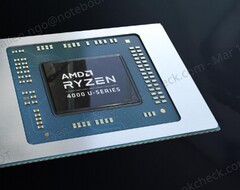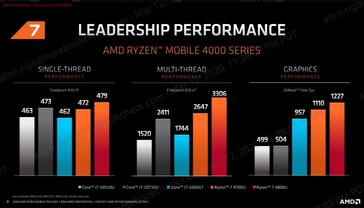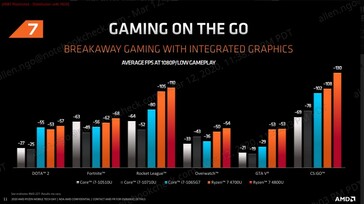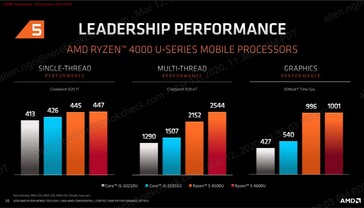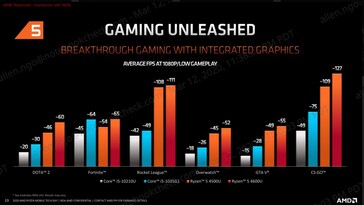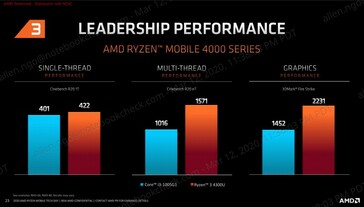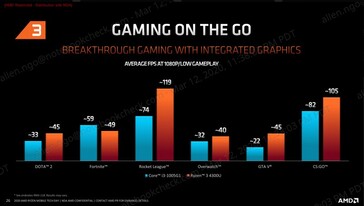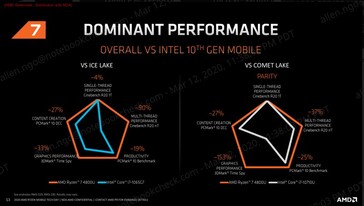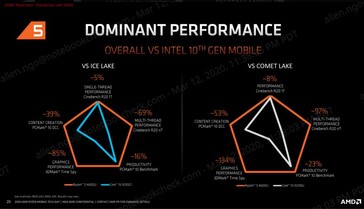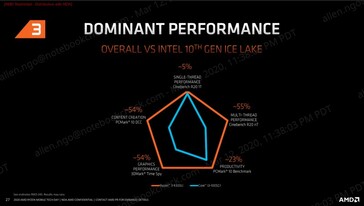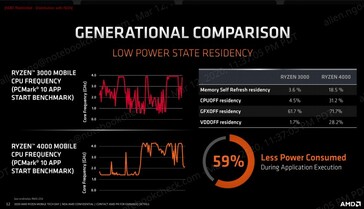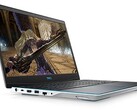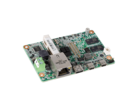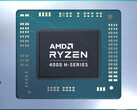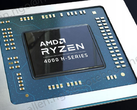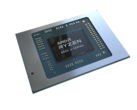The Ryzen 7 4800u is the first 8-core 16-thread ULV x86 CPU, with the 7nm switch resulting in nearly double the transistors (9.8 B) on a 25% smaller die (156mm2).
Compared to the previous generation Ryzen 7 3700U, the Ryzen 7 4800U has +25% single-core performance. The Vega graphics performance has also improved with the power budget allowing +25% higher peak clock and +77% higher peak memory bandwidth (up to 59% higher performance per graphics unit.)
The most interesting comparison, as always, is against the mobile ULV incumbent. Intel has two 10th gen pathways: The first is the lower core-count ‘Ice Lake’, with its better Iris Plus graphics. The second is the higher core-count ‘Comet Lake’, with Intel’s weaker UHD graphics. AMD is quick to point out that this forces consumers to choose whether they want better performance in entertainment workloads or better performance in productivity tasks. AMD’s angle here is that the Ryzen 4000 U-series processors don’t make customers choose which is more important to them.
For example, the Ryzen 7 4800U against the Ice Lake i7-1065G7 results in +4% single-core, +90% multi-core, +33% graphics score. The same 4800U against the Comet Lake i7-10710U results in a tie for single-core, +37% multi-core, and +153% graphics. The overall comparative performance across multiple metrics gets even better for AMD when comparing the Ryzen 5 vs i5 and Ryzen 3 vs i3 mid-range segments.
The Ryzen 4000 U-series is comprised of the following SKUs:
| SKU | Cores/Threads | Boost/Base Clock (GHz) | Cache (MB) | GPU Cores | GPU Frequency (MHz) | TDP (W) |
|---|---|---|---|---|---|---|
| Ryzen 7 4800U | 8/16 | 4.2/1.8 | 12 | 8 | 1750 | 15 |
| Ryzen 7 4700U | 8/8 | 4.1/1.8 | 12 | 7 | 1600 | 15 |
| Ryzen 5 4600U | 6/12 | 4.0/2.1 | 11 | 6 | 1500 | 15 |
| Ryzen 5 4500U | 6/6 | 4.0/2.3 | 11 | 6 | 1500 | 15 |
| Ryzen 3 4300U | 4/4 | 3.7/2.7 | 6 | 5 | 1400 | 15 |
The instructions-per-watt has doubled, while the SoC power requirement has reduced by 20%, giving both increased performance and lower required power draw. The gains have come from a 1.15x IPC increase, 1.17x improvement attributed to design, and a 1.47x efficiency improvement from moving to a 7nm lithography (note: figures multiply to 1.98).
Design changes have resulted in improved integrated power management via better detection of idle time and bursts of activity so that cores can quickly switch down into low power states, while still being responsive. In addition to much faster entry into low-power states compared to the 3000 series, there has been a focus on tweaking the way the power budget gets distributed when only a small number of high-power cores are needed.
Further power-related changes include power management firmware changes that allow the processor to respond to changes in workload 33% faster, and an upgrade to the latest ACPI states giving three available states instead of one.
In other areas, the HEVC encoder has had a significant improvement in encoder speed (+31%), support for DDR4-3200 and LPDDR4X-4266 RAM, and +4 PCIe lanes for NVMe, wifi 6, and 5G. The TDP is OEM configurable from 12 to 25 W, with 25 W giving up to 17% higher performance than 15 W during benchmark tasks. This would possibly be higher under sustained workloads.
While these figures are from AMD, our traditional NotebookCheck tests and benchmarks will soon be available.
Source(s)
AMD Press Release




